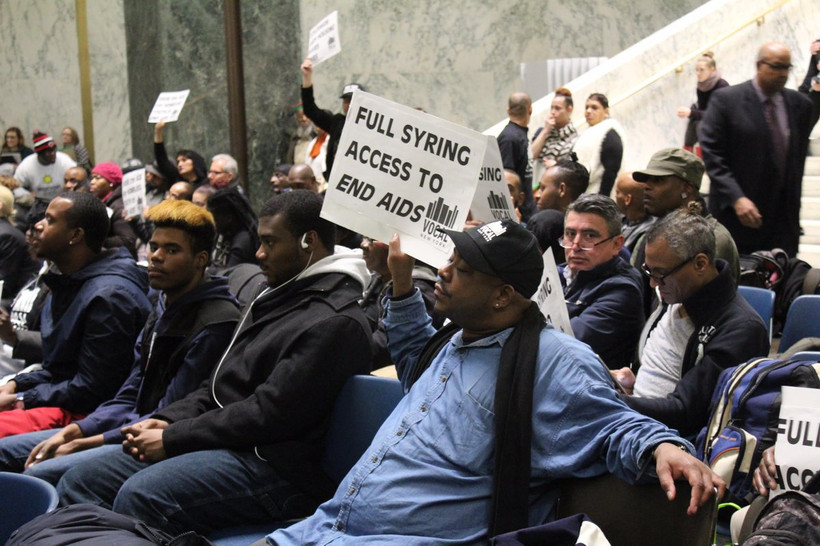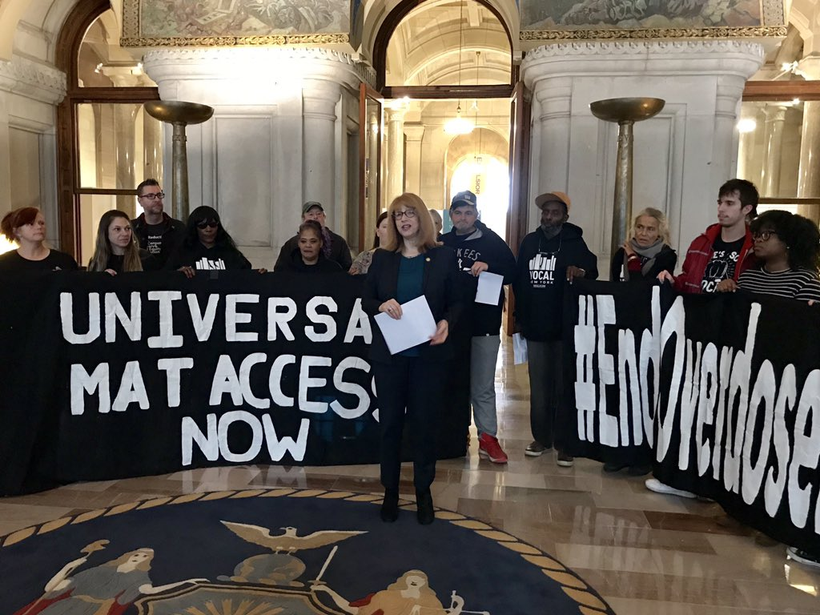In 2021 Legislative Session, a New Approach to Drug Policy
This year, state legislators passed major bills in response to the overdose crisis. Will Cuomo sign them?



This year, state legislators passed major bills in response to the overdose crisis. Will Cuomo sign them?



BEFORE YOU GO, consider: If not for the article you just read, would the information in it be public?
Or would it remain hidden — buried within the confines of New York’s sprawling criminal-legal apparatus?
I started working at New York Focus in 2022, not long after the outlet launched. Since that time, our reporters and editors have been vigorously scrutinizing every facet of the Empire State’s criminal justice institutions, investigating power players and the impact of policy on state prisons, county jails, and local police and courts — always with an eye toward what it means for people involved in the system.
That system works hard to make those people invisible, and it shields those at the top from scrutiny. And without rigorous, resource-intensive journalism, it would all operate with significantly more impunity.
Only a handful of journalists do this type of work in New York. In the last decades, the number of local news outlets in the state has nearly halved, making our coverage all the more critical. Our criminal justice reporting has been cited in lawsuits, spurred legislation, and led to the rescission of statewide policies. With your help, we can continue to do this work, and go even deeper: We have endless ideas for more ambitious projects and harder hitting investigations. But we need your help.
As a small, nonprofit outlet, we rely on our readers to support our journalism. If you’re able, please consider supporting us with a one-time or monthly gift. We so appreciate your help.
Here’s to a more just, more transparent New York.


The legislature rejected Hochul’s central public safety policy priorities while embracing proposals to increase prison oversight.
In New York, half of CIU exonerations involve prosecutorial misconduct, but DAs rarely acknowledge who got it wrong.
No time to read our big investigation? Here’s a quick summary of everything you need to know.
In rural New York, even some Republicans are frustrated as the administration halts $186 million in conservation payments to farmers.
A 2023 law is transforming the state power authority into one of New York’s biggest renewable developers. Some still want it to go further.
Unless Albany offers more money, tens of thousands of parents in New York City are set to lose child care assistance this year. We spoke to six of them.
The company used to help employers avoid paying for workers’ benefits. Now it’s slated to administer health insurance for tens of thousands of low-wage New Yorkers.
A legally mandated program to reimburse organ donors has languished since 2022. The health department now says it’ll fix that this year.
The health commissioner has asked the state’s Attorney General and lobbyist watchdog to launch a ‘formal inquiry.’